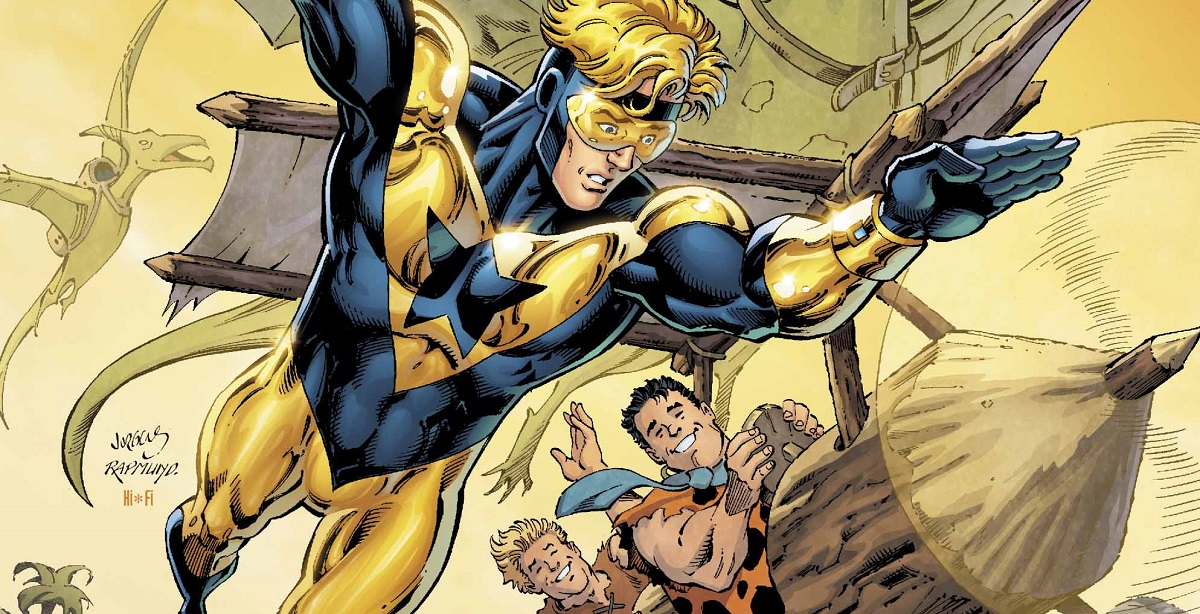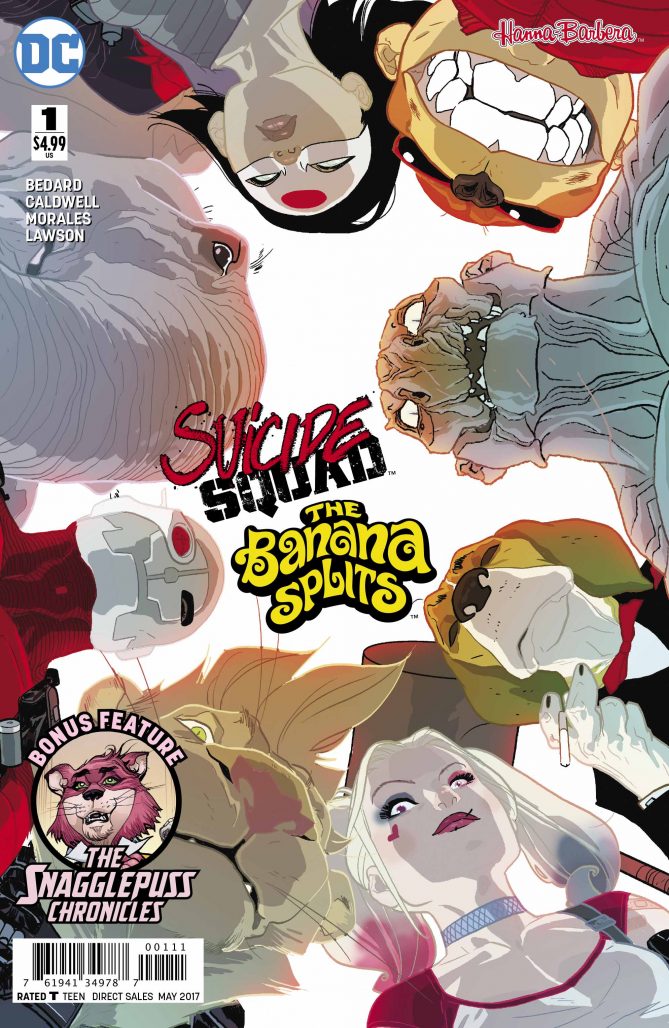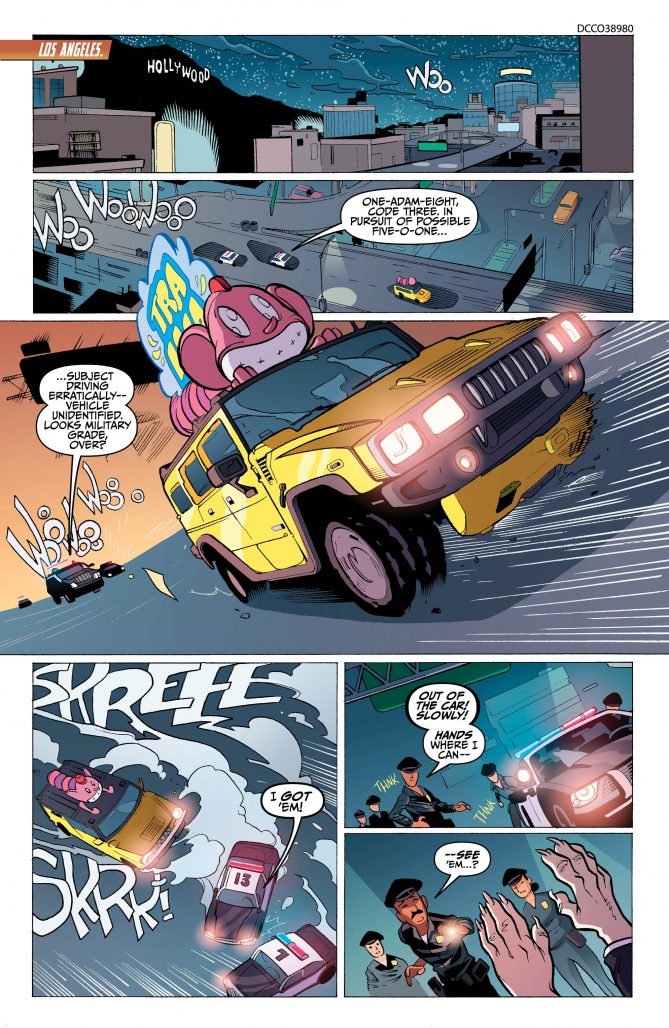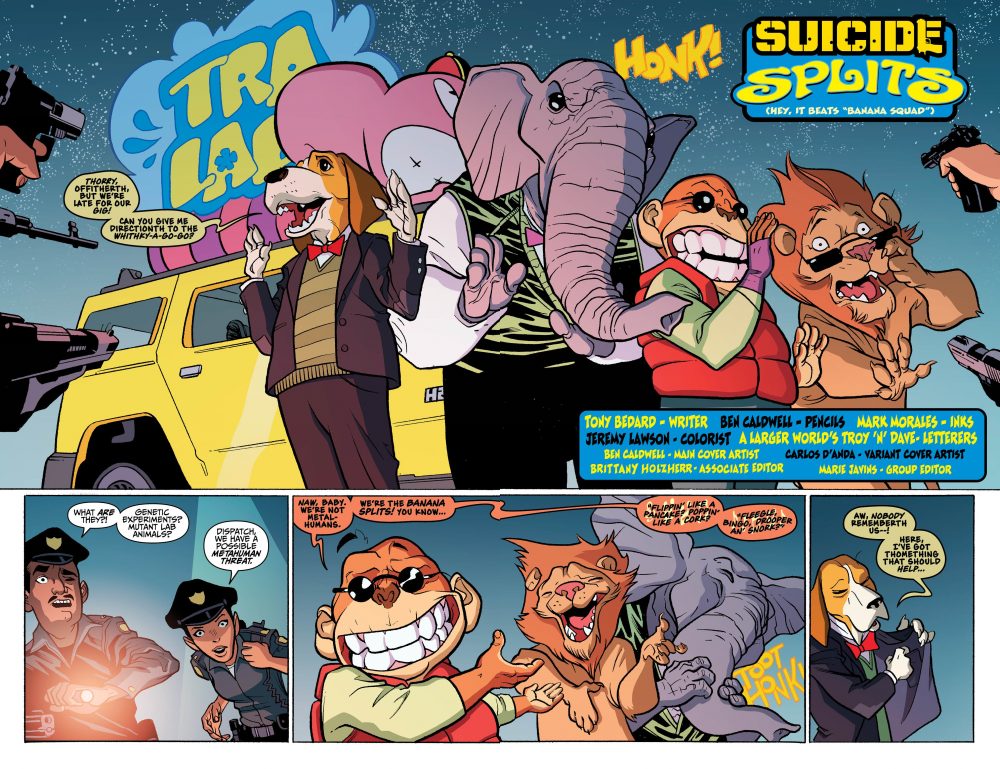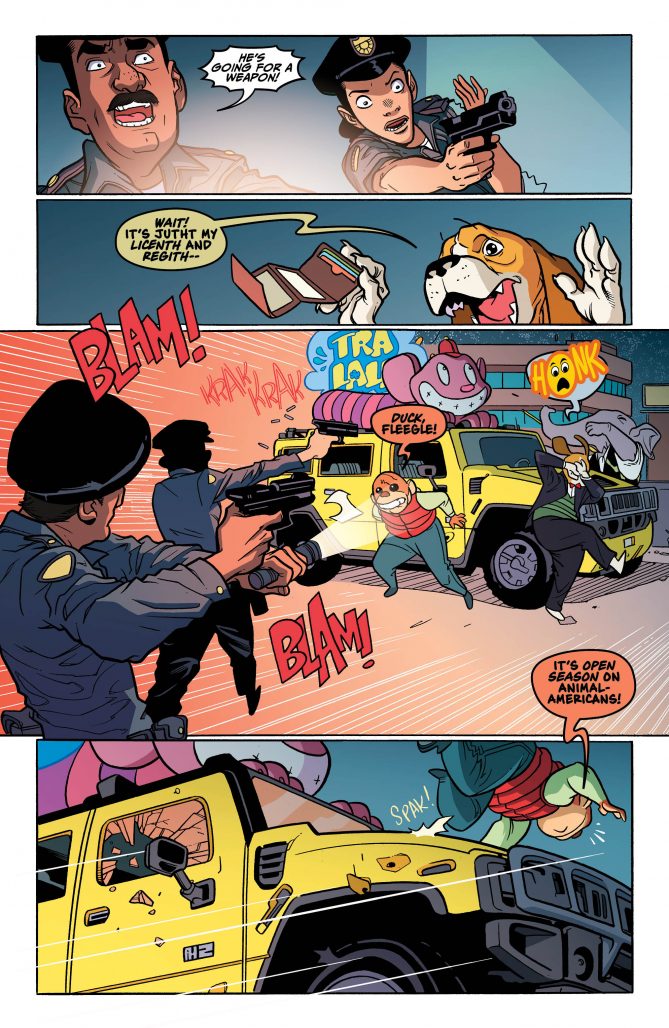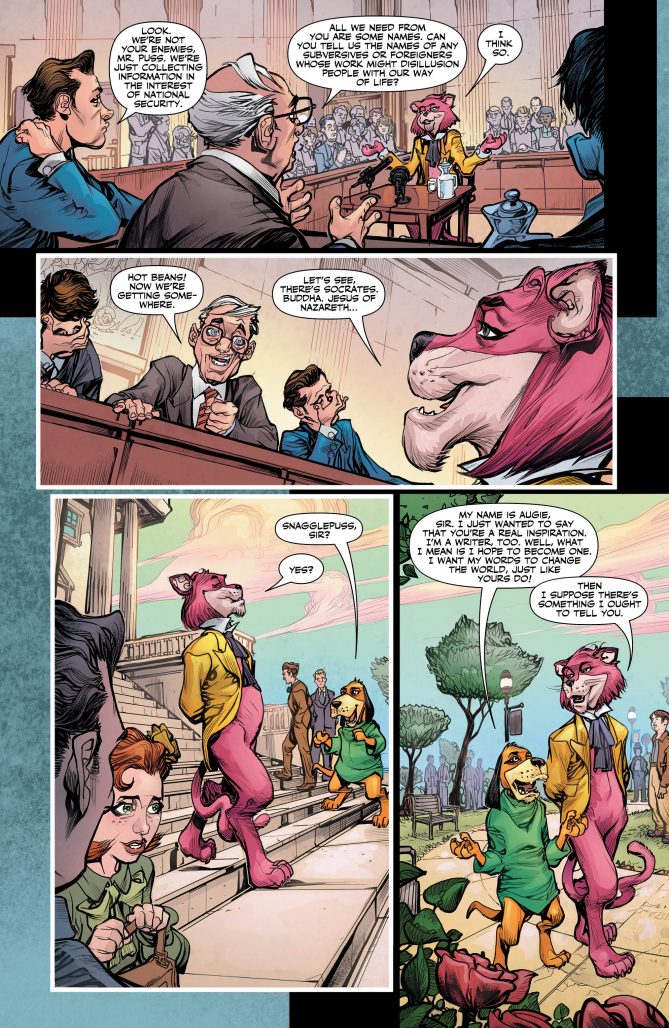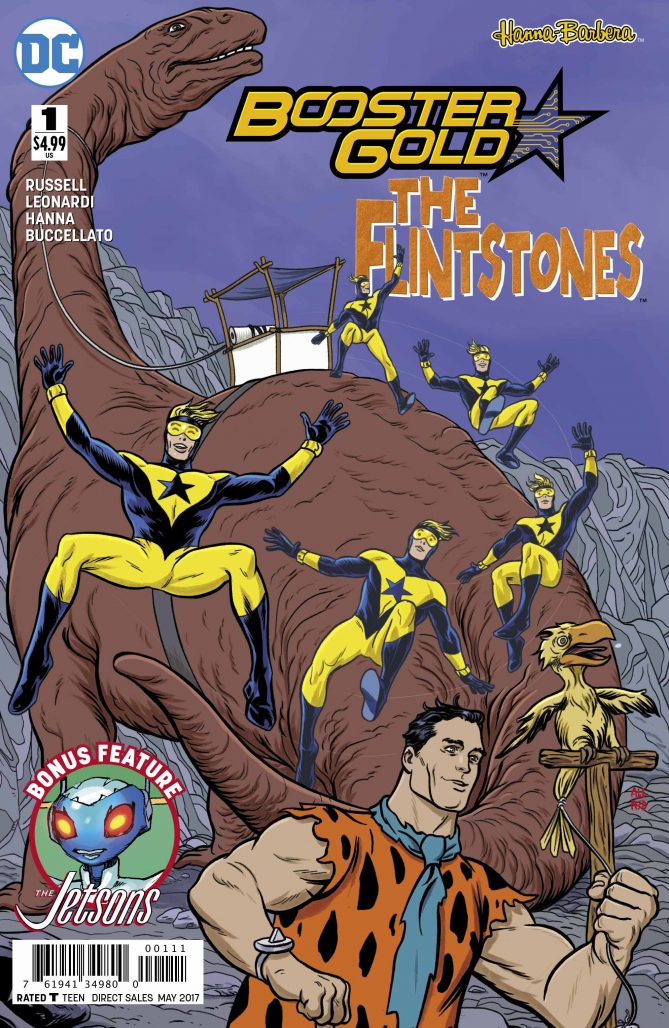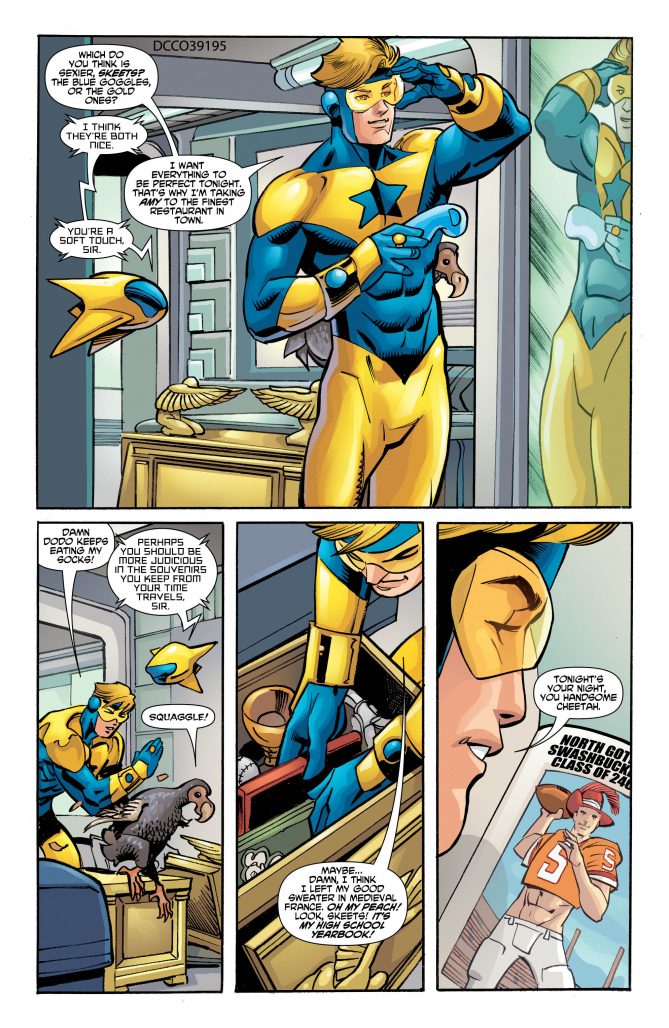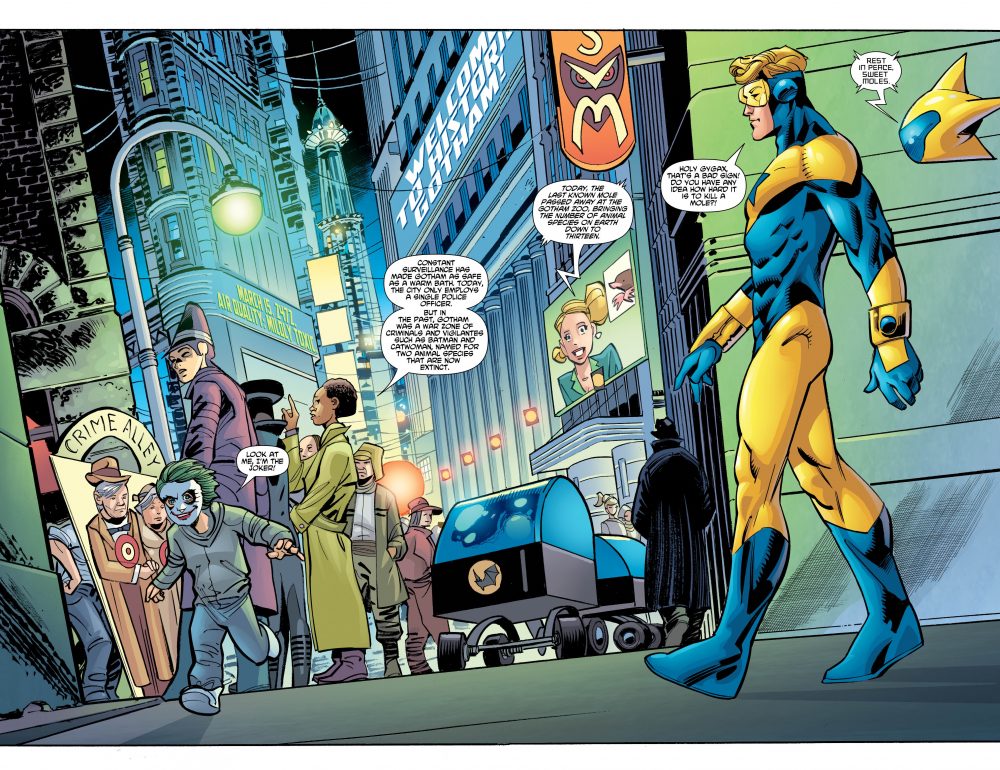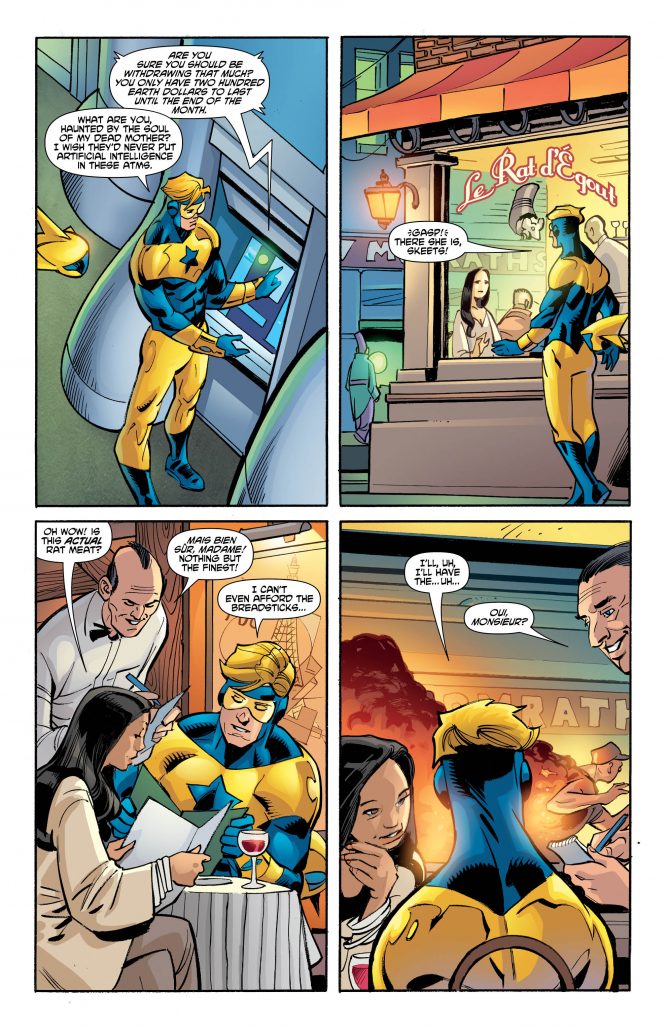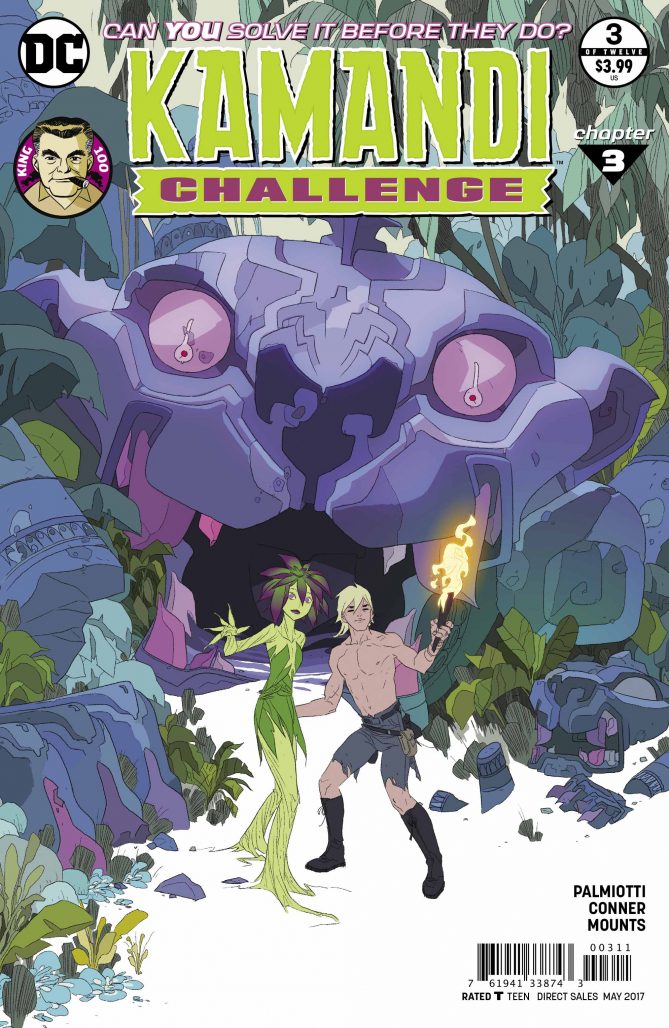In June 2016, DC Comics kicked off the start of its Rebirth initiative. After a wave of criticism surrounding the way they have treated their characters’ rich histories since 2011’s New 52 relaunch, DC has decided to rebrand. They hope that by restoring their characters’ pasts, they will restore readers’ faith in them as well. Do they succeed? That’s what the Comics Beat managing editor Alex Lu and entertainment editor Kyle Pinion are here to discuss. Book by book. Panel by panel.
UPDATE: With a new year comes change. Going forward in 2017, Alex and Kyle will be alternating articles weekly in order to give each other a breather after 7 straight months of going tandem. A little break is always good! This week, Alex takes charge.
Note: the reviews below contain **spoilers**. If you want a quick, spoiler-free buy/pass recommendation on the comics in question, check out the bottom of the article for our final verdict.
 Suicide Squad/The Banana Splits
Suicide Squad/The Banana Splits
Writer: Tony Bedard
Penciller: Ben Caldwell
Inker: Mark Morales
Colorist: Jeremy Lawson
Letterers: A Larger World’s Troy ‘n’ Dave
Suicide Squad/The Banana Splits doesn’t give a shit. And that’s great. One of four crossovers between the DC universe and classic Hanna-Barbera cartoons hitting store shelves this week, this book sees a group of anthropomorphic children’s variety show animals team up for a decidedly less all-ages adventure with Task Force X. It’s an incredibly weird premise for a book, but one that succeeds thanks to its irreverent sense of humor and playful artwork.
The story told in Suicide Squad/The Banana Splits is a relatively simple one. After a covert mission gone awry, the Suicide Squad is left battered and scattered across the side of a mountain. Their field commander, Colonel Rick Flagg, is being held hostage by an army of sentient cyborgs with dangerous weapons. Amanda Waller is forced to assemble another task force of expendables to bail them out: enter The Banana Splits, a friendly band of animals who have immediately found themselves under arrest after stumbling into a world far less wholesome than their own.
There is no way to understate how important Ben Caldwell’s art is to the success of this book. Ever since Prez, his work has consistently impressed me. His artwork is built for comedic stories like this one. Characters are rendered with exaggerated eyes and mouths that exude emotion. He has a knack for creating layouts that stretch and compress time for maximum humorous effect. When you pair him with a bold inker like Mark Morales and the cel-shaded colors of Jeremy Lawson, you end up with an incredibly gorgeous book that looks light-hearted even when the plot is bearing dangerous fangs. How many artists could make a high speed chase scene followed by a police shoot out feel thrilling yet completely unthreatening at the same time? How many artists can make you laugh while a menagerie of mad men lay waste to what superficially look like small children?
That said, Tony Bedard’s script is no slouch here. While the plot itself is paint-by-numbers, Bedard fills the script with small gags that nod the tonal discrepancy of this crossover, thus keeping the reader’s attention. For example, after the the Banana Splits are arrested, they’re thrown in Belle Reve on suspicion of being meta-humans. As they walk in, a group of prisons jeer at them and call them the “furry convention,” asking if they “need help with them zippers?” Then, of course, within the next four pages, they somehow manage to get caught in what basically qualifies as a race war between the “normies,” “metas, “ “tech-heads,” and anthropomorphic animals of the prison.
Knowing nothing about the Banana Splits besides what is available on Wikipedia, I can’t say whether or not any of what takes place in Suicide Squad/The Banana Splits is true to the original incarnation of their characters. That said, I don’t particularly care if it is! This book is fantastic and one of the most fun reads on the shelf this week. I can’t say it’s a timeless work, but it’s certainly the sort of book that will leave you giggling from start to finish.
Final Verdict: Buy
Stray Thoughts
There’s a Snagglepuss backup in the back of this comic written by Prez’s Mark Russell and illustrated by Howard Porter with Steve Buccellato colors. Again, I know as much about Snagglepuss as I do most other Hanna-Barbera characters, but I rather enjoyed this book. As is usual for Russell’s work, the writer uses this short to project an absurd lens upon a controversial contemporary issue– in this case, the role of the writer in times of political turmoil. He draws a comparison between America’s current societal climate and the one that led to the McCarthy-style persecutions of the late 1940s and early 1950s. It’s an interesting and poignant piece of work that I strongly recommend.
 Booster Gold/The Flintstones
Booster Gold/The Flintstones
Writer: Mark Russell
Penciller: Rick Leonardi
Inker: Scott Hanna
Colorist: Steve Buccellato
Letterer: Dave Sharpe
Speaking of Mark Russell, here he is again this week as the writer of the Booster Gold/The Flinstones crossover special! Russell is honestly a gem of a writer. He has knack for using comics to explore political controversy through an absurdist lens that encourages the reader to think on topical issues without preaching to or attacking them. Working alongside a visual team that gives Booster’s and the Flintstones’ worlds a lighthearted touch, this creative group assembles an entertaining story that reflects upon the role religion plays in politics.
In essence, this one-shot follows Booster Gold in the year 2472. Gotham is crime free and only employs one police officer. There are only 13 species of animal left on Earth. It’s both utopia and dystopia rolled into a happy little bundle. And then the aliens attack. Booster is forced to ditch his Tinder date in a dumpster and travel back in time to the first time these aliens show up on Earth– which just happens to be when the Flintstones were around.
In traveling back to stop the aliens, Booster actually ends up killing a rather benevolent member of their species. This envoy turns out to be the aliens’ religious prophet and the reason why the end up attacking Earth centuries later. It’s a rather timey-whimey premise but the book’s creative team doesn’t get too caught up in the particulars of the situation. Instead, they focus on having fun with the wonky pairing. When the prophet is first seen preaching to the cavemen of the Flintstones’ era, he promises to eradicate hunger, poverty, and make sure “erections lasting more than four hours [are no longer] a cause for concern,” poking fun at the world’s current social problems, both big and small. Not all the humor is political, though. When Booster Gold needs help fixing his time machine, Fred leads him to a scientist, who asks Booster how much power he needs to charge his ship. Booster says he needs “five-million giga-joules.” The scientist asks for a conversion to “eel power.”
By the end of the book, Booster returns to his time to try and stop the alien invasion only the find that the prophet he killed at the start of his adventure has returned thanks to more time shenanigans. The prophet notes that he preached peace and that to wage war in his name is to ignore his teachings. He says that they did not listen to him– they “just used [his] death as an excuse to go on being the same old buttholes [they] were before.” It’s an age old lesson reflected in conflicts as far back as the Crusades and as recent as the campaigns being waged by extremists in the Middle East and conversely by religious conservatives in the west. This time around though, it’s an alien teaching the lesson to us while calling us “buttholes.”
The art in this story is solid, though relatively unexciting. Rick Leonardi, Scott Hanna, and Steve Buccellato produce a visual world that lies more on the cartoon-y side of DC’s house style, but feels relatively grounded in that house form nonetheless. It lends the book with a classic all-ages feel that looks pretty good, but doesn’t stand out to me. That said, the art definitely does its job. The action is easy to follow and every page is visually appealing. I can imagine some of the visual gags landing a little better in the hands of someone with a more deft eye for humor like Ben Caldwell, but that’s more of a nitpick than an outright complaint.
All in all, Booster Gold/The Flintstones is an entertaining romp that features one of my favorite DC characters wreaking havoc throughout time as he is wont to do. This isn’t Ben Caldwell’s most poignant scripting, but the story is plenty of fun and deftly visualized by the artistic team. If you buy one of the four DC/Hanna-Barbera crossovers this week, let it be Suicide Squad/The Banana Splits. If you buy two though, this is the other one that you should peel off the shelves.
Final Verdict: Buy
 Round-Up
Round-Up
- The other two Hanna-Barbera crossover titles out this week include Adam Strange/Future Quest and Green Lantern/Space Ghost. The latter is a definite pass, in my opinion. The writing is oddly discordant from the art so action sequences don’t quite align with the dialogue at times. The storyline is pretty rote and there’s no particular draw to this title for me. I have no strong affinity for Adam Strange/Future Quest either, but I think it might be a more interesting read if you’re a fan of at least one of those two properties. Unlike the two titles I reviewed this week, I just don’t think either of these books, ultimately, have much to offer beyond some sense of nostalgia that is simply beyond me as a young’in.
- Kamandi Challenge #3 is out this week. Jimmy Palmiotti and Amanda Conner take the reins with Paul Mounts on color. Together, these three continue this absurd series with yet stranger feats for Kamandi to overcome. This issue in particular is a lot of fun in no small part thanks to Conner’s artwork, which is as joyous and detailed as ever. Very few people could make roasted anthropomorphic bats look anything approaching innocent, yet here we are.
Miss any of our earlier reviews? Check out our full archive!


